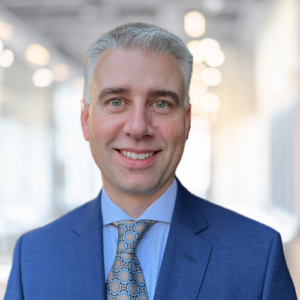This is a case of steady income, moderate spending and moderate needs.
A couple we’ll call Marty and Eve, both 40, are raising three children — two pre-schoolers and a seven-year old – in Alberta. They bring home a combined $10,200 per month from their jobs in construction and health care, respectively. They have $359,950 in financial assets including their $62,800 family RESP plus an $825,000 house and a $77,000 cottage. Their home mortgage is paid and their only debt is a $135,000 home equity line of credit. In financial terms, they have a secure base for the future.
They worry their preparations for retirement in 20 years and for providing for their kids’ post-secondary education, may not be sufficient. In fact, they are late in building retirement savings. Their concerns are understandable.
Family Finance asked Eliott Einarson, head of the Winnipeg office of Ottawa-based Exponent Investment Management Inc., to work with Marty and Eve.
Retirement targets
An annual work pension of $76,000 from Eve’s job is expected to form the base of their retirement, but their financial assets are relatively modest.
Working in their favour when it comes to their 20-year timeline is their low debt load and the fact that their kids will be out of the house by then, perhaps even with careers of their own or finishing their post-secondary educations. Factors working against them are Marty’s decision to pay himself dividends rather than salary, thus avoiding contributions to the Canada Pension Plan. That means he will have a very modest CPP benefit and OAS will not begin until age 65.
Expenses and savings
Right now, Eve earns $60,000 per year before tax or $3,200 per month after taxes and deductions. Marty takes home $7,000 per month after business expenses and taxes. Their $10,200 per month allows them to allocate $2,400 toward paying down their $135,000 line of credit. At that rate, it will be gone in about five years.
Other expenses include $1,200 per month for child care. That will be gone in five years when their youngest is in primary school. They also save $627 per month for the kids’ RESP, $400 per month in Eve’s RRSP and $1,000 in their TFSAs. The balance of spending supports daily expenses.
The present balance of the family RESP, $62,800, growing with contributions of $7,524 plus the Canada Education Savings Grant of the lesser of $500 or 20 per cent of contributions per beneficiary, $2,508 in this case times three, total $9,029 — call it $9,000 per year — will rise to $190,668 in a decade when the eldest child is ready for post-secondary education. The younger children, ages five and two, will have longer periods for accumulation so the sums available would be $63,555, $73,698 and $90,100 from eldest to youngest. The parents could easily average the sums so each child would have $75,784. That’s more than enough per child for a first degree if they live at home and even some carryover for post-graduate study.
Retirement goals
Their retirement goal is $5,000 per month after tax, but $6,000 in 2022 dollars is more realistic, Einarson suggests. Their RRSPs have a $275,625 balance, their TFSAs hold $21,150 and the kids’ RESP has a $62,800 balance. All in all, they have $1,156,950 net worth of which the RRSPs and TFSAs, total $297,775, are their dedicated retirement funds.
In five years, when their HELOC is paid off, Marty and Eve can start adding $3,000 per month to a non-registered investment account. If they maintain that rate of savings for 15 years and generate three per cent after inflation, they will be able to build up $689,650 in non-registered assets by age 60. That would provide $31,160 after tax for the 35 years to their age 96.
Eve has $169,000 in RRSPs. She adds $400 per month and her employer adds $450 per month. That adds up to $10,200 per year. Added to existing RRSP assets, the RRSPs will grow to $579,300 in 20 years. That sum would sustain annual taxable payouts of $26,630 for the 35 years to her age 95 with all income and capital paid out. Marty has $106,000 in his RRSP. With no further contributions, this balance will grow to $191,448 in 20 years assuming a three per cent return after inflation. That sum will generate $8,650 of annual taxable income with the same assumptions.
Adding up income components at their age 60, they would have annual RRSP income of $26,630 and $8,650, and $31,160 from non-registered investments. That’s a total of $66,440. After splits of eligible income and 10 per cent average tax, they would have $59,796 per year. Their TFSA with present balances of $21,150 and $6,000 each in annual contributions will grow to $371,500 in 20 years. That balance would generate $16,785 of tax-free retirement income for the following 35 years. Added to their other retirement income, they would have $76,581 annual net income. That’s $6,380 per month, just a little more than their adjusted monthly retirement income target.
At 65, they can add $7,850 each from Old Age Security plus Canada Pension Plan benefits of $11,000 per year for Eve and $1,450 per year for Marty. That would lift their annual incomes to $94,590 not counting TFSA income. After 15 per cent average tax they would have $80,401 and $16,785 from their TFSAs would total 97,185. That’s $8,100 per month. Splits of eligible income would assure avoidance of the OAS clawback. The couple’s retirement income would exceed their expectations — with one concern.
Marty and Eve have no life insurance other than a one-year salary benefit for Eve through her employer. They would do well to discuss life insurance with some independent agents for a policy for Marty and perhaps supplemental life coverage for Eve. Given their rising surplus, they could cover needs until the kids leave home in 20 years at most, or make life insurance a part of their investment planning for retirement. The costs would be manageable as the family’s needs decline. It’s worth investigating, Einarson explains.
“This is a case of steady income, moderate spending and moderate needs,” Einarson explains. “Eve and Marty can have financial security, a comfortable retirement and assure their children the means for post-secondary education.”
4 Retirement Stars**** out of 5






